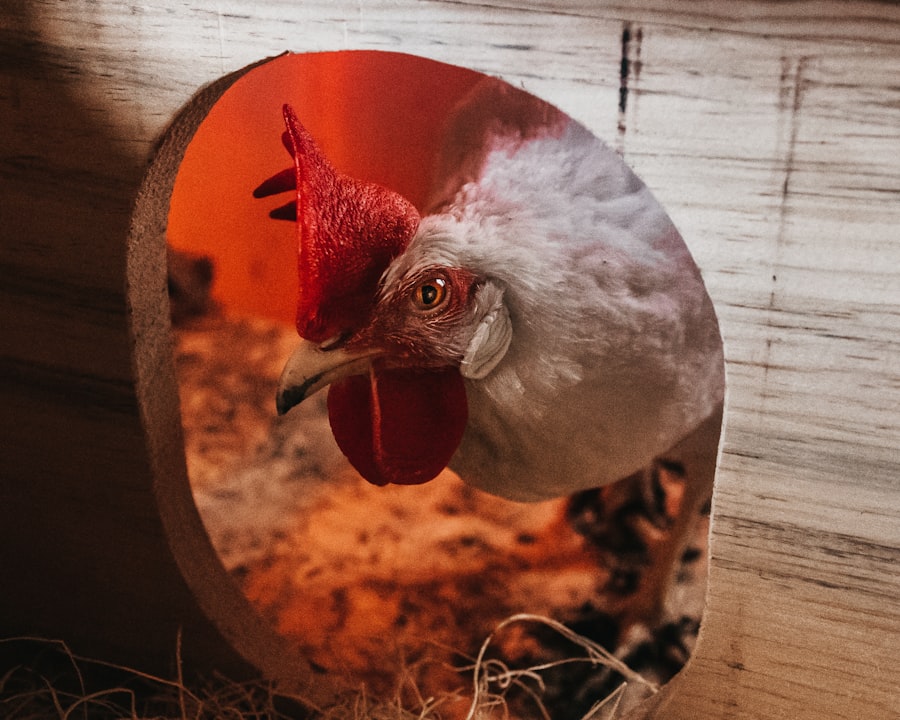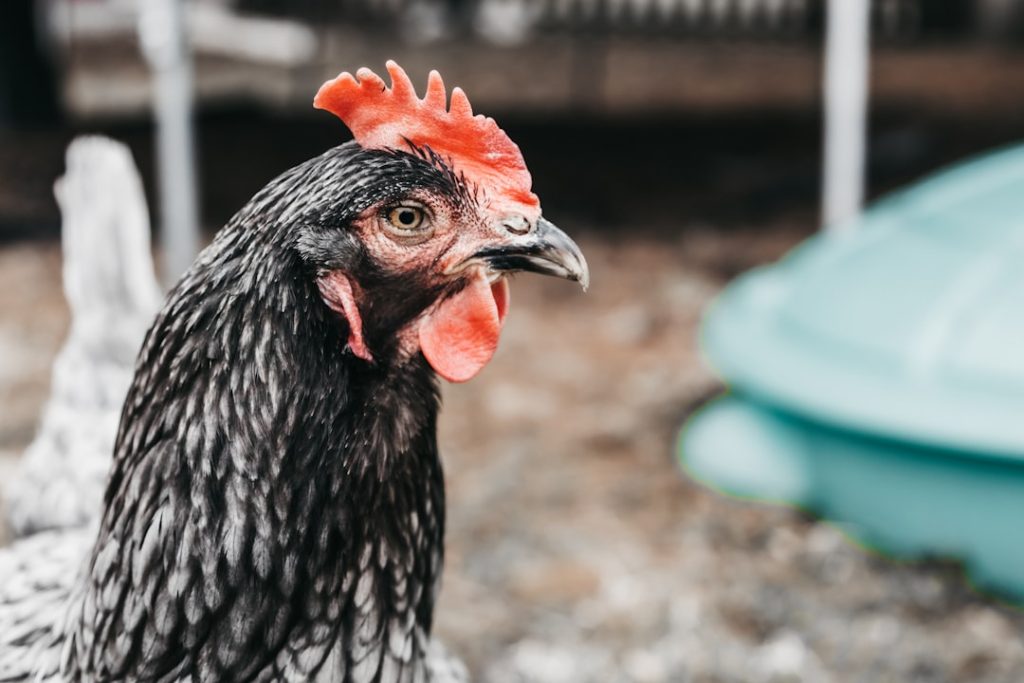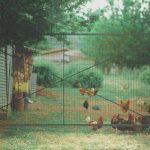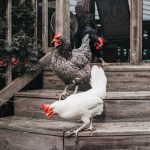Incorporating chickens into a Dungeons & Dragons campaign can enhance the game world in several ways. Chickens serve as a practical food source, providing eggs and meat for characters, particularly useful during travel or in remote locations. They also offer materials like feathers for crafting purposes, such as arrow fletching or clothing embellishments.
Chickens contribute to the realism and depth of the game environment, as they are common in many real-world settings. Their presence can make the fictional world feel more authentic and vibrant. Additionally, chickens can provide a source of companionship and entertainment for characters, adding a lighthearted element to the game.
By including chickens in a D&D campaign, game masters can create a more immersive and dynamic world, offering players opportunities for resource management, crafting, and character interaction beyond combat and questing.
Table of Contents
- 1 How to Care for Chickens in Your D&D Campaign
- 2 Incorporating Chickens into Your D&D Adventures
- 3 Choosing the Right Chicken Breeds for Your D&D Setting
- 4 Building a Chicken Coop in Your D&D World
- 5 Handling Chicken Predators in Your D&D Campaign
- 6 The Role of Chickens in D&D Economy and Agriculture
- 7 FAQs
Key Takeaways
- Chickens in D&D can provide a sustainable source of food, feathers, and even magical components for players.
- Care for chickens in your D&D campaign by providing them with food, water, and shelter, and protecting them from predators.
- Incorporate chickens into your D&D adventures by using them as quest objectives, sources of information, or even as magical creatures.
- Choose the right chicken breeds for your D&D setting based on their characteristics and suitability for the environment.
- Build a chicken coop in your D&D world to house and protect your chickens, and consider adding magical enhancements for extra security.
- Handle chicken predators in your D&D campaign by setting traps, hiring guards, or using magical deterrents to protect your flock.
- Chickens play a vital role in the D&D economy and agriculture, providing food, feathers, and magical components, and contributing to the overall ecosystem.
How to Care for Chickens in Your D&D Campaign
Providing a Suitable Environment
First and foremost, it’s essential to provide a suitable environment for the chickens to live in. This includes building a coop or shelter to protect them from the elements and predators.
Meeting Their Basic Needs
Additionally, ensuring that the chickens have access to food and water is crucial for their well-being. Characters may need to spend time gathering or purchasing feed for the chickens, as well as ensuring that they have a clean water source.
Ongoing Care and Management
Furthermore, characters will need to tend to the chickens on a regular basis, which may involve tasks such as collecting eggs, cleaning the coop, and checking for signs of illness or injury. This ongoing care and management can create opportunities for role-playing and decision-making as characters balance their responsibilities to the chickens with their other adventures and quests.
Incorporating Chickens into Your D&D Adventures

Incorporating chickens into your D&D adventures can add an element of unpredictability and surprise to your campaign. Chickens can be used as a plot device or source of conflict, as they may become the target of theft or attack by monsters or rival factions. Characters may need to protect their chickens from harm, leading to exciting and unexpected encounters.
Additionally, chickens can also serve as a source of information or clues, as they may react to nearby dangers or hidden treasures. Furthermore, chickens can be used to create memorable and humorous moments in your campaign. Characters may find themselves in comical situations as they attempt to wrangle or care for their feathered companions.
Chickens can also be used to add a touch of whimsy and charm to your adventures, providing a lighthearted contrast to more serious or intense storylines. By incorporating chickens into your D&D adventures, you can create a more dynamic and engaging game world for your players to explore.
Choosing the Right Chicken Breeds for Your D&D Setting
When choosing chicken breeds for your D&D setting, it’s important to consider the environment and culture of the world you have created. Different breeds of chickens have unique characteristics and traits that can enhance the realism and diversity of your game world. For example, if your campaign is set in a cold and mountainous region, you may want to include cold-hardy breeds such as the Orpington or Wyandotte.
On the other hand, if your setting is more tropical or jungle-like, breeds such as the Leghorn or Easter Egger may be more suitable. Additionally, considering the cultural significance of chickens in your world can also influence your choice of breeds. Certain breeds may hold symbolic or religious importance in different cultures, adding depth and richness to your game world.
Furthermore, incorporating rare or exotic breeds of chickens can add an element of intrigue and fascination to your campaign, as characters may encounter unfamiliar and exotic creatures during their adventures.
Building a Chicken Coop in Your D&D World
Building a chicken coop in your D&D world involves careful planning and consideration of the needs of the chickens as well as the resources available in the game world. Characters may need to gather materials such as wood, wire mesh, and roofing materials in order to construct a sturdy and secure coop. Additionally, characters will need to consider the layout and design of the coop in order to provide adequate space and protection for the chickens.
Furthermore, characters may need to take into account the local climate and environmental factors when building a chicken coop. For example, if the region experiences harsh winters or frequent predator attacks, the coop may need to be reinforced or insulated accordingly. Additionally, characters may need to consider the placement of the coop in relation to other structures or resources in their settlement, in order to ensure that it is convenient and practical for daily use.
Handling Chicken Predators in Your D&D Campaign

Adding Challenge and Danger
Handling chicken predators in your D&D campaign can add an element of challenge and danger for your characters. Predators such as wolves, foxes, or giant birds of prey may pose a threat to the safety of the chickens, requiring characters to take measures to protect their flock. Characters may need to set traps, build fences, or even engage in combat with dangerous creatures in order to safeguard their chickens.
Maintaining Ecological Balance
Furthermore, characters may need to consider the ecological balance of their game world when dealing with predators. Eliminating all predators from an area can have unforeseen consequences on the local ecosystem, leading to an imbalance that may affect other aspects of the campaign.
Finding Creative Solutions
Characters may need to find creative solutions for coexisting with predators while still protecting their chickens, adding depth and complexity to their interactions with the natural world.
The Role of Chickens in D&D Economy and Agriculture
Chickens can play a significant role in the economy and agriculture of your D&D world. They can provide a sustainable source of food and materials for characters and settlements, reducing reliance on external sources for these resources. Additionally, characters may have the opportunity to trade or sell eggs, meat, feathers, or live chickens as a means of generating income or acquiring goods.
Furthermore, incorporating chickens into the agricultural practices of your game world can add depth and realism to the setting. Characters may need to consider factors such as crop rotation, soil fertility, and pest control in order to maintain a healthy and productive environment for their chickens. Additionally, characters may need to navigate social and political dynamics related to chicken farming, such as competition with other farmers or regulations imposed by local authorities.
In conclusion, keeping chickens in your Dungeons & Dragons campaign can bring a variety of benefits and opportunities for storytelling and role-playing. By carefully considering the care, role, and impact of chickens in your game world, you can create a more immersive and dynamic experience for your players. Whether it’s protecting their flock from predators or navigating the economic implications of chicken farming, incorporating chickens into your D&D campaign can add depth, challenge, and charm to your adventures.
If you’re interested in keeping chickens, you may also want to consider adding guinea fowl to your flock. According to a recent article on Poultry Wizard, guinea fowl can live with chickens and provide additional benefits to your poultry setup. Check out their website for more information on keeping chickens and guinea fowl together.
FAQs
What is D&D Keeping Chickens?
D&D Keeping Chickens is a hobby that involves raising and caring for chickens in a Dungeons & Dragons (D&D) setting. It combines the fantasy world of D&D with the real-life practice of chicken keeping.
What are the benefits of D&D Keeping Chickens?
D&D Keeping Chickens allows players to incorporate a new element into their D&D campaigns, adding a sense of realism and practicality to their fantasy worlds. It also provides an opportunity for players to learn about the responsibilities and rewards of raising chickens.
How does D&D Keeping Chickens work in a game?
In a D&D game, players can incorporate chicken keeping by role-playing as characters who tend to a flock of chickens. This can involve tasks such as feeding, collecting eggs, building coops, and protecting the chickens from predators.
Are there specific rules for D&D Keeping Chickens?
There are no official rules for D&D Keeping Chickens, as it is a homebrew concept that players can customize to fit their campaigns. However, players can create their own rules and mechanics for chicken keeping, such as determining the effects of different types of feed or the likelihood of a chicken laying an egg.
Can D&D Keeping Chickens be educational?
Yes, D&D Keeping Chickens can be educational as it provides players with an opportunity to learn about the basics of chicken care and the importance of sustainable food sources. It can also teach players about the value of hard work and responsibility.
Meet Walter, the feathered-friend fanatic of Florida! Nestled in the sunshine state, Walter struts through life with his feathered companions, clucking his way to happiness. With a coop that’s fancier than a five-star hotel, he’s the Don Juan of the chicken world. When he’s not teaching his hens to do the cha-cha, you’ll find him in a heated debate with his prized rooster, Sir Clucks-a-Lot. Walter’s poultry passion is no yolk; he’s the sunny-side-up guy you never knew you needed in your flock of friends!







